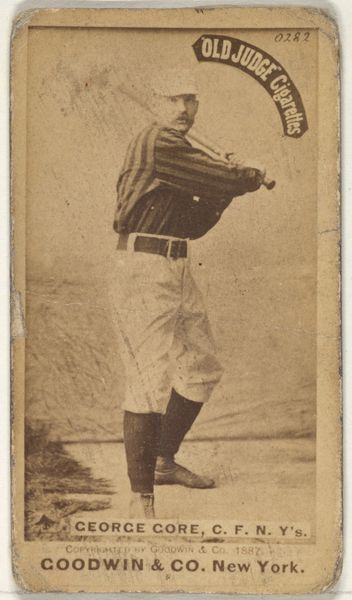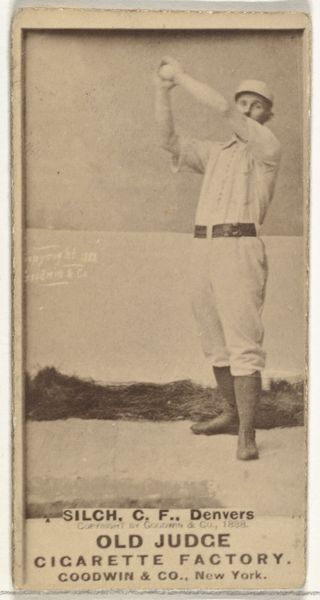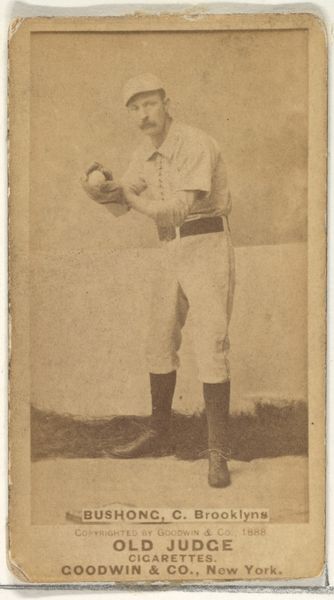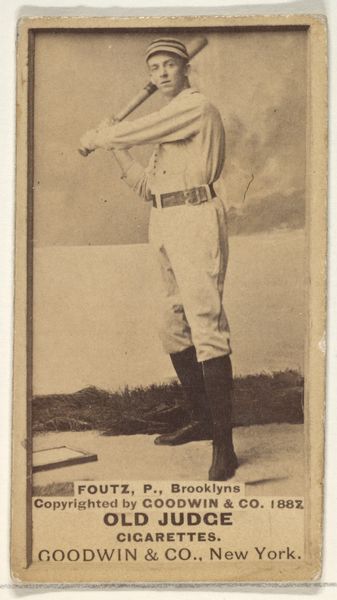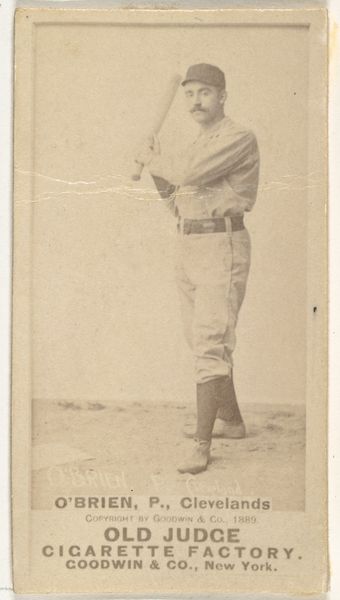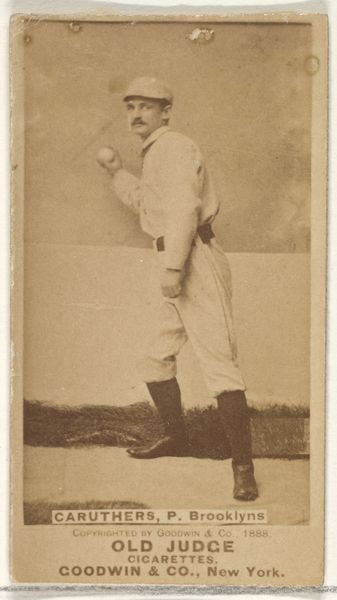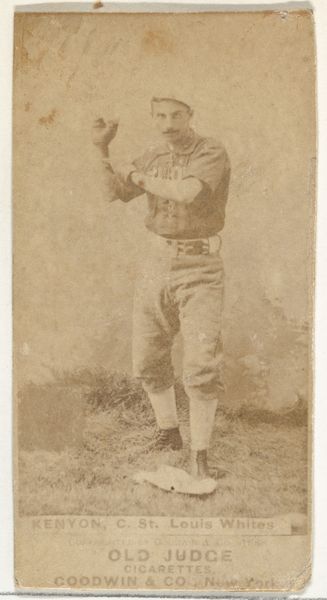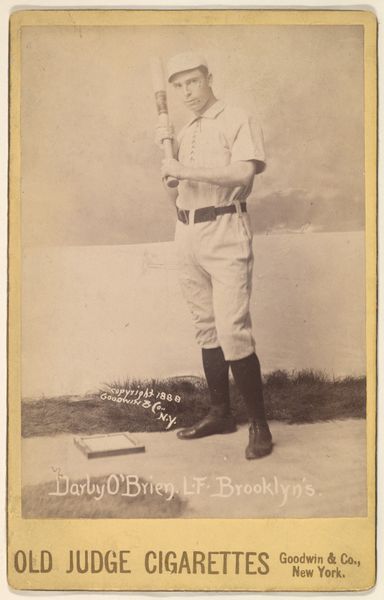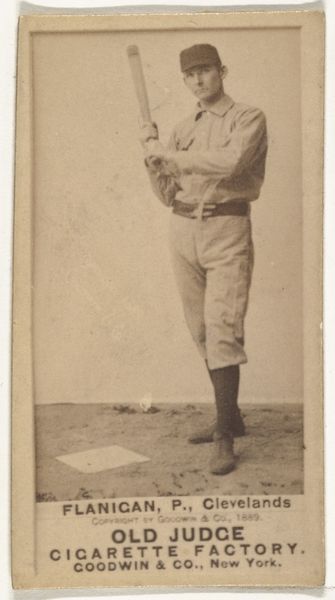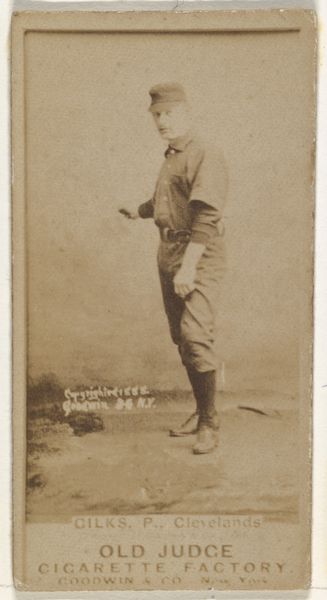
David Luther Foutz, Pitcher, Brooklyn, from the series Old Judge Cigarettes 1888
0:00
0:00
print, photography
#
portrait
# print
#
impressionism
#
baseball
#
photography
#
historical photography
#
19th century
#
men
#
athlete
Dimensions: sheet: 6 1/2 x 4 3/8 in. (16.5 x 11.1 cm)
Copyright: Public Domain
Curator: The sepia tone lends such a feeling of nostalgia, doesn’t it? Like stepping back into a hazy, bygone era. Editor: Absolutely. And this particular photograph, "David Luther Foutz, Pitcher, Brooklyn, from the series Old Judge Cigarettes" made around 1888 by Goodwin & Company, gives us a clear view into late 19th-century baseball and its early commercialization. It now resides at the Metropolitan Museum of Art. Curator: The cigarette advertising link is interesting. Think of the cultural shift from then to now – marketing athleticism with something so antithetical to it! Makes you wonder about the audience’s consumption habits, literally and figuratively. Editor: Exactly! The image was, in essence, a collectible trading card, designed to promote a lifestyle of leisure and consumerism through the celebrated image of an athlete. The process itself involved mass-produced photographic prints, tucked inside cigarette packs. Think about the implications for art's reach: everyday accessibility tied directly to tobacco consumption. Curator: That’s clever. To go deeper, the materials and process are integral. It’s a simple photograph, but its original mass production transformed its status. This image moves beyond pure portraiture; the material existence, how it was manufactured and circulated, really shapes its meaning. Editor: The Old Judge series wasn’t just about selling cigarettes; it was about constructing and popularizing the image of the professional athlete. How baseball figures were marketed speaks volumes about societal values then. Curator: Agreed. These cards democratized portraiture on one hand but exploited athletic fame to feed capitalist appetites, highlighting some of the critical dichotomies and commodifications still relevant today. Editor: In fact, museums recognizing these kinds of images elevates everyday printed matter to artifacts that mirror public obsession and anxieties throughout time. Curator: Exactly. By looking closely, we’ve not only analyzed a photograph but unpacked broader connections around material culture, manufacturing techniques, public perception, and the cultural landscape of the period. Editor: And maybe we can both agree, whether considering it as a commodity or an artistic historical record, this modest image carries a far heavier weight of cultural impact than we initially anticipated.
Comments
No comments
Be the first to comment and join the conversation on the ultimate creative platform.
